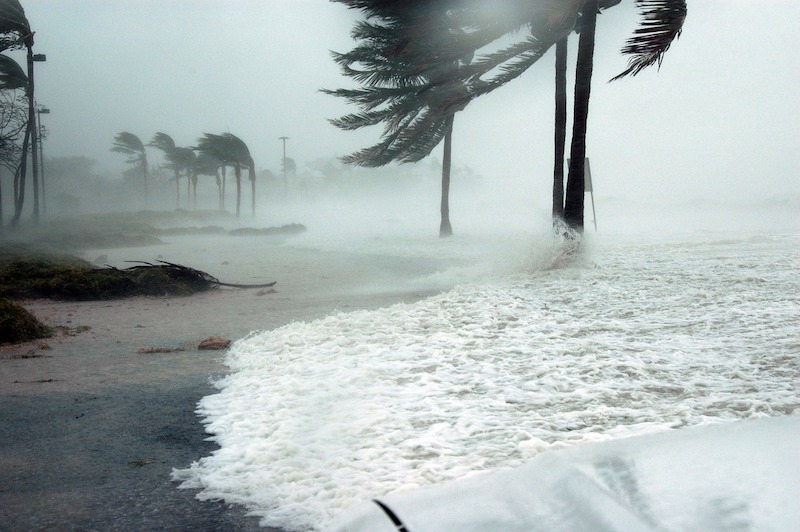The American Institute of Architects (AIA) is urging Senate lawmakers to adopt the Disaster Recovery Reform Act (DRRA) to ensure communities across America can recover from natural disasters more efficiently and cost-effectively.
AIA is supporting the legislation as it will prioritize pre-disaster mitigation and ensure that post-disaster assistance enables communities to rebuild with the latest model building codes to ensure future resiliency.
“Strong, disaster-resilient building codes are a vital foundation to creating safer communities,” said Rose Grant, chair of AIA’s disaster assistance committee. “Adoption of these codes go even further to help the built-environment battle the onslaught of billion-dollar disasters.”
Grant was speaking at the AIA’s educational briefing for policy makers Tuesday night, which provided insights on the lessons architects have learned serving as responders with AIA’s Disaster Assistance Program following hurricanes Maria, Harvey and Irma last year. The briefing also featured insights into how communities can prepare for the 2018 hurricane season that commences June 1.
“As hurricane season approaches, architects stand ready to help communities prepare for and recover from the kind of weather related events that victimized so many,” said AIA EVP and Chief Executive Officer Robert Ivy, FAIA. “We hope this discussion brings new insights and appreciation for how architects can assist communities in recovering from disasters and help to prepare for them in the future.”
AIA's Disaster Assistance Program has trained thousands of architect volunteers in responding to disasters. Through the program, architects serve as second responders providing critical safety inspections of buildings and infrastructures following disasters. In addition, architects provide lawmakers with insights and lessons they learn in the field to help shape better policies around disasters, which includes resilient-building policies.
“Forging relationships between architects and local officials is key to mitigating and preventing the damage caused by weather related disasters,” said Illya Azaroff, AIA (principal of +LAB Architect PLLC). “Of the post-Sandy policies AIA recommended, nine were enacted into law in New York and 10 were included in the New York City building code. This is just one of the many examples where architects have been able to lend their expertise to shape policies that support a better built environment.”
Visit AIA’s website for more information on its Disaster Assistance Program.
Related Stories
Sponsored | Steel Buildings | Nov 7, 2022
Steel structures offer faster path to climate benefits
Faster delivery of buildings isn’t always associated with sustainability benefits or long-term value, but things are changing. An instructive case is in the development of steel structures that not only allow speedier erection times, but also can reduce embodied carbon and create durable, highly resilient building approaches.
Fire and Life Safety | Oct 4, 2022
Fire safety considerations for cantilevered buildings
Bold cantilevered designs are prevalent today, as developers and architects strive to maximize space, views, and natural light in buildings. Cantilevered structures, however, present a host of challenges for building teams, according to José R. Rivera, PE, Associate Principal and Director of Plumbing and Fire Protection with Lilker.
Resiliency | Sep 30, 2022
Designing buildings for wildfire defensibility
Wold Architects and Engineers' Senior Planner Ryan Downs, AIA, talks about how to make structures and communities more fire-resistant.
Building Team | Jun 13, 2022
Partnership rethinks emergency shelters to turn them into sustainable, resilient homes
Holcim and the Norman Foster Foundation have struck a partnership to rethink emergency shelters to turn them into sustainable and resilient homes.
Green Specifications | May 12, 2022
MG2’s Sustainable Materials Evaluation System
Learn how MG2’s Sustainable Materials Evaluation System helps clients, prospects, and staff choose the most environmentally feasible materials for their building projects. Candon Murphy, LEED GA, Assoc. IIDA, Design Lab Manager and Materials & Sustainability Specialist with MG2, speaks with BD+C Executive Editor Rob Cassidy.
Sponsored | BD+C University Course | May 5, 2022
Designing with architectural insulated metal wall panels
Insulated metal wall panels (IMPs) offer a sleek, modern, and lightweight envelope system that is highly customizable. This continuing education course explores the characteristics of insulated metal wall panels, including how they can offer a six-in-one design solution. Discussions also include design options, installation processes, code compliance, sustainability, and available warranties.
Sponsored | BD+C University Course | Apr 19, 2022
Multi-story building systems and selection criteria
This course outlines the attributes, functions, benefits, limits, and acoustic qualities of composite deck slabs. It reviews the three primary types of composite systems that represent the full range of long-span composite floor systems and examines the criteria for their selection, design, and engineering.
Wood | Apr 13, 2022
Mass timber: Multifamily’s next big building system
Mass timber construction experts offer advice on how to use prefabricated wood systems to help you reach for the heights with your next apartment or condominium project.
AEC Tech Innovation | Mar 9, 2022
Meet Emerge: WSP USA's new AEC tech incubator
Pooja Jain, WSP’s VP-Strategic Innovation, discusses the pilot programs her firm’s new incubator, Emerge, has initiated with four tech startup companies. Jain speaks with BD+C's John Caulfield about the four AEC tech firms to join Cohort 1 of the firm’s incubator.
Codes and Standards | Feb 21, 2022
More bad news on sea level rise for U.S. coastal areas
A new government report predicts sea levels in the U.S. of 10 to 12 inches higher by 2050, with some major cities on the East and Gulf coasts experiencing damaging floods even on sunny days.

















